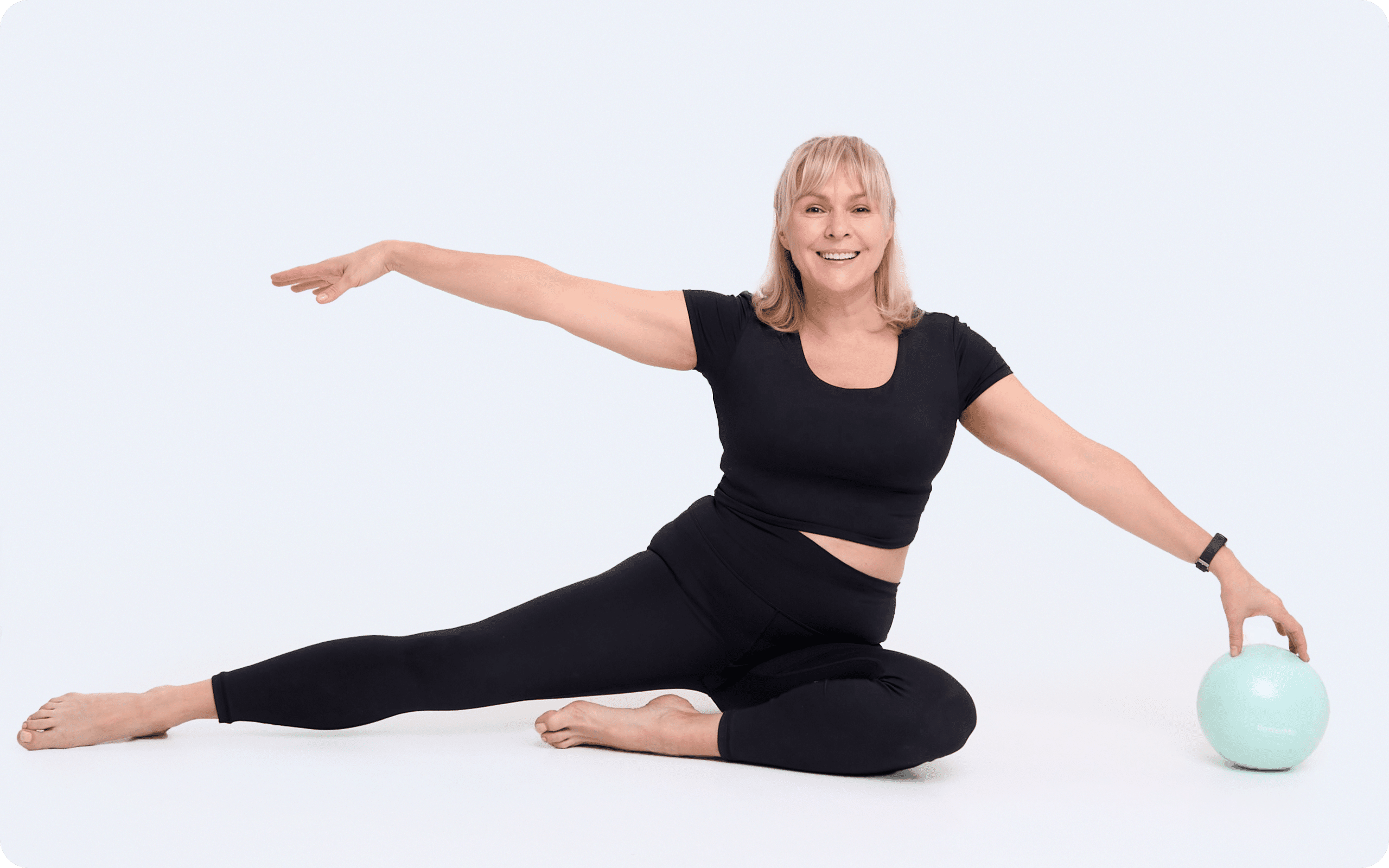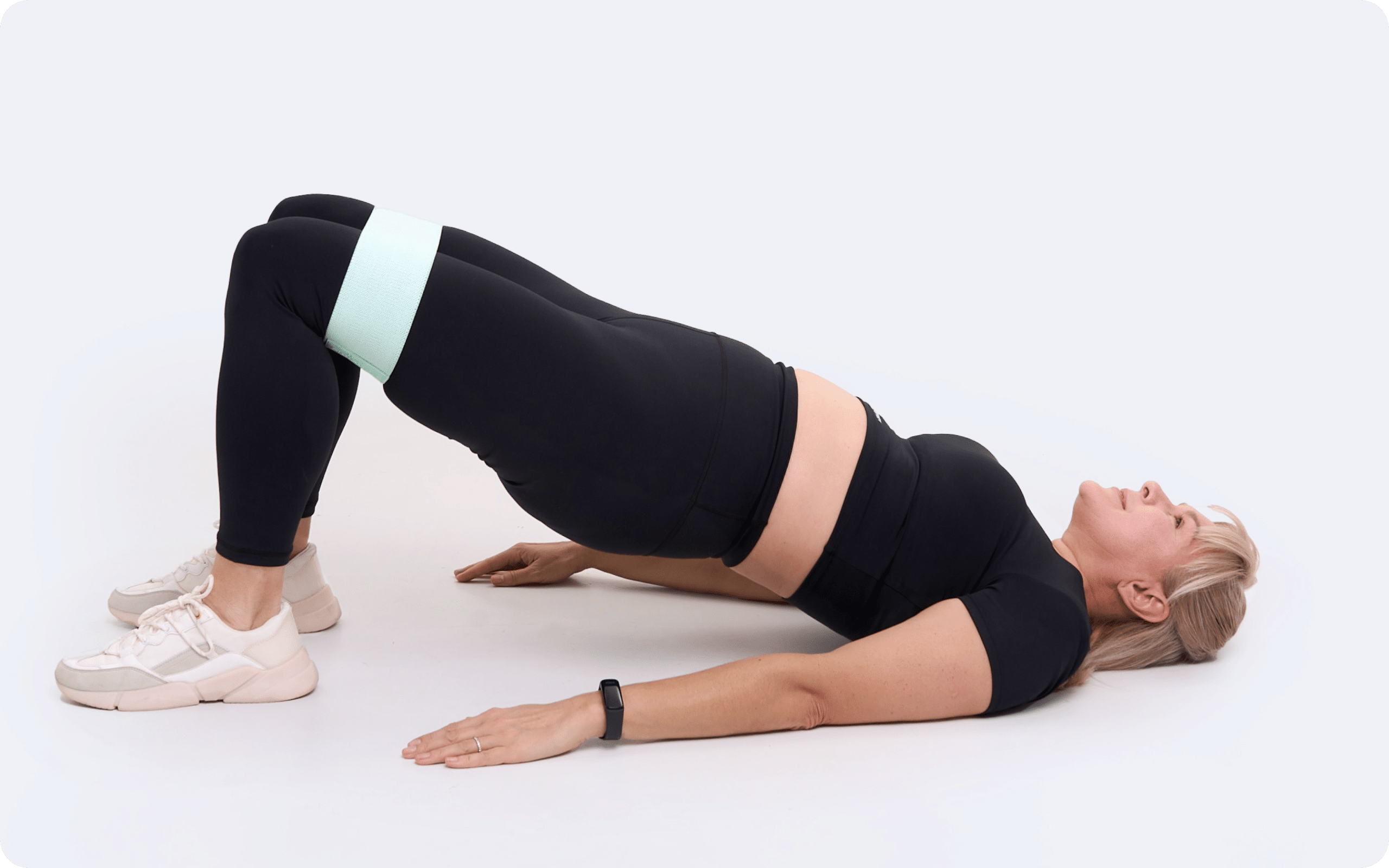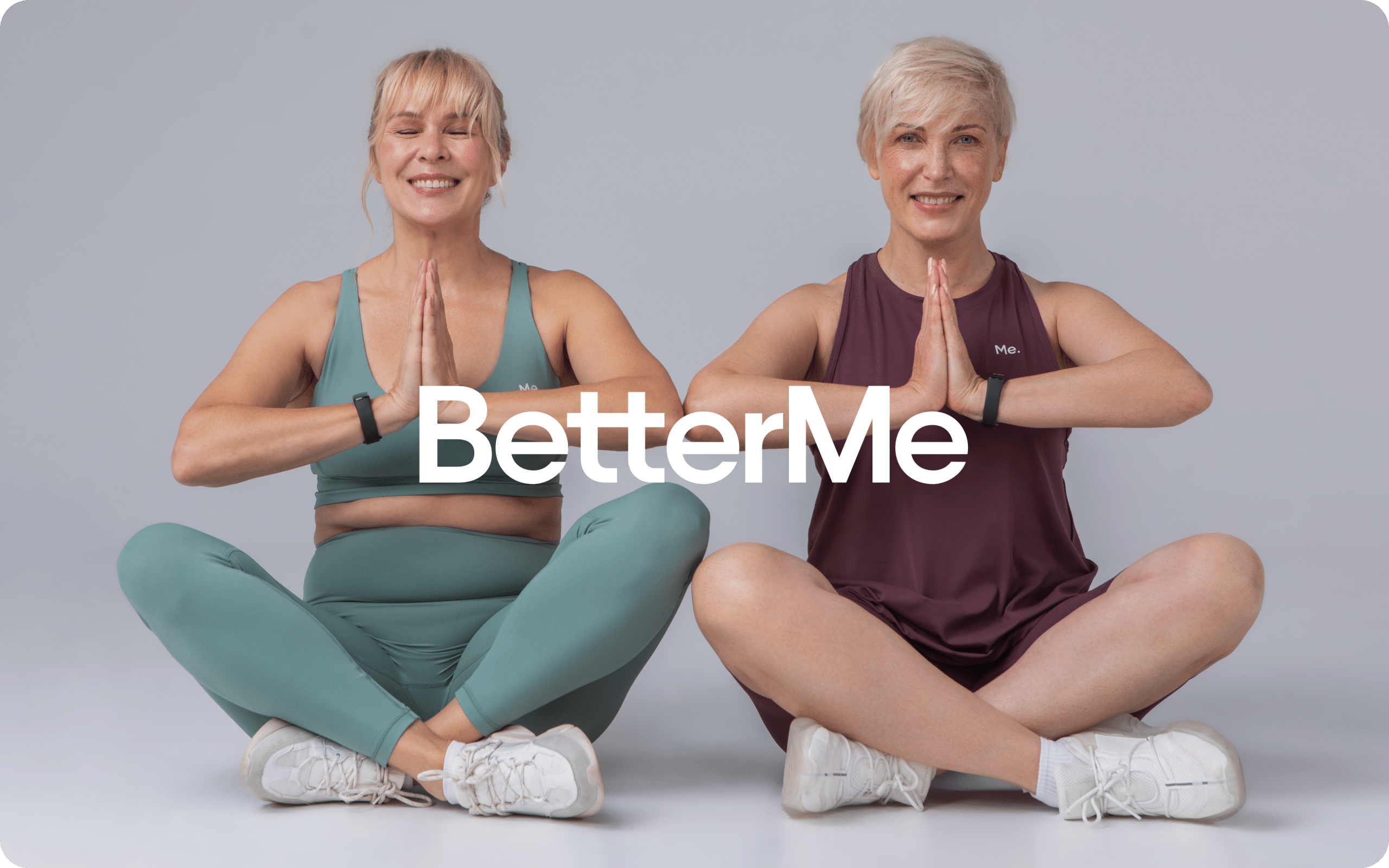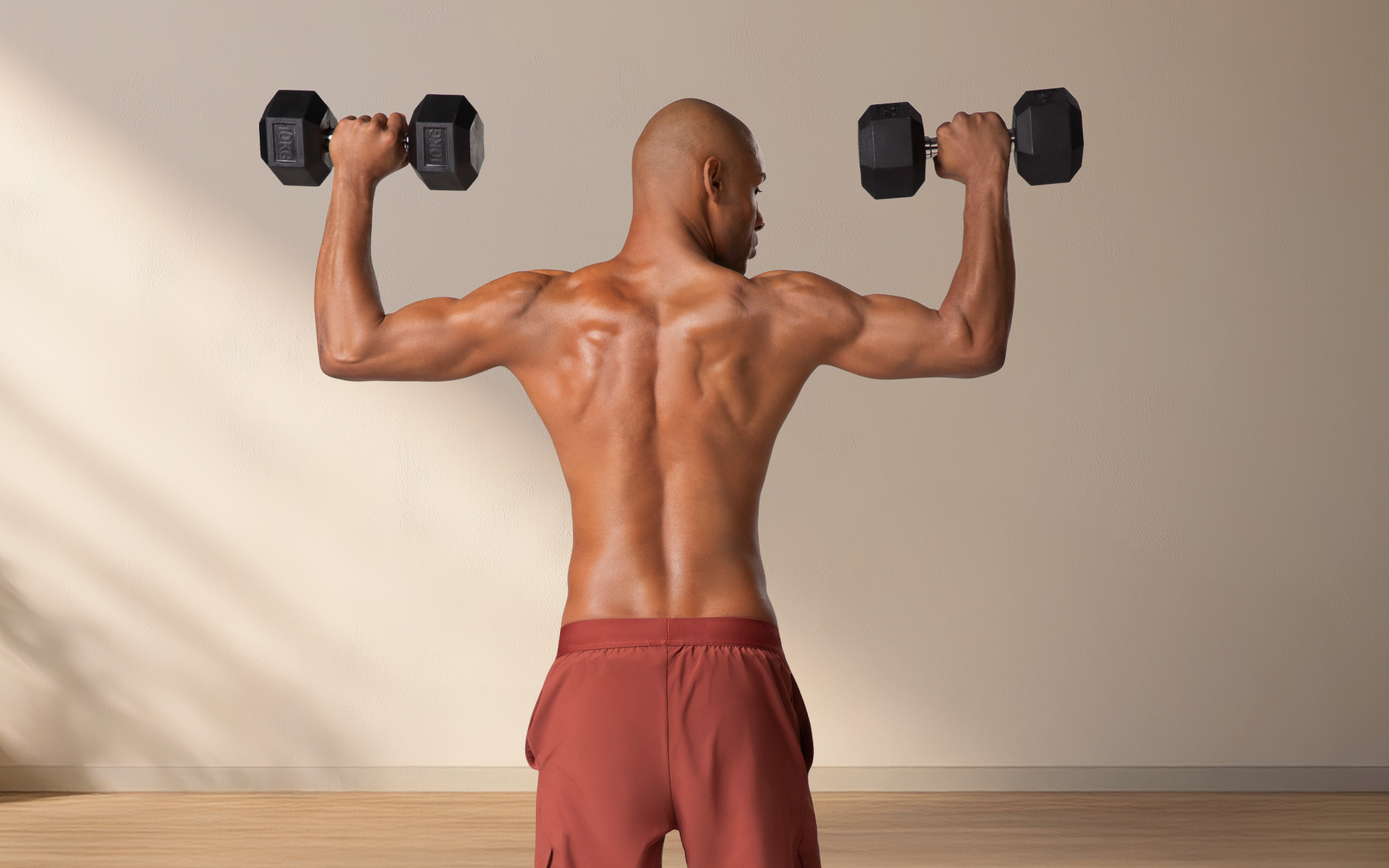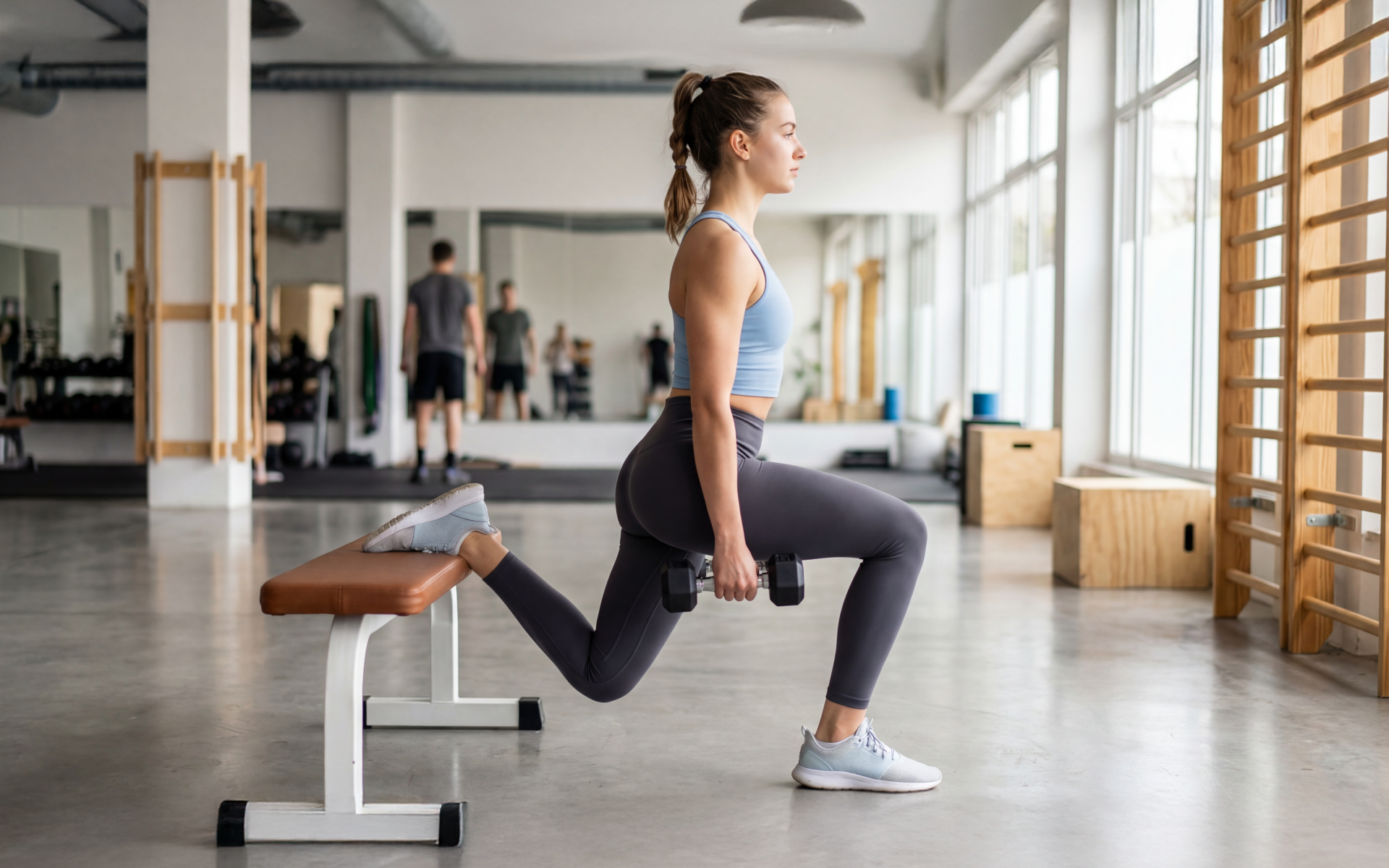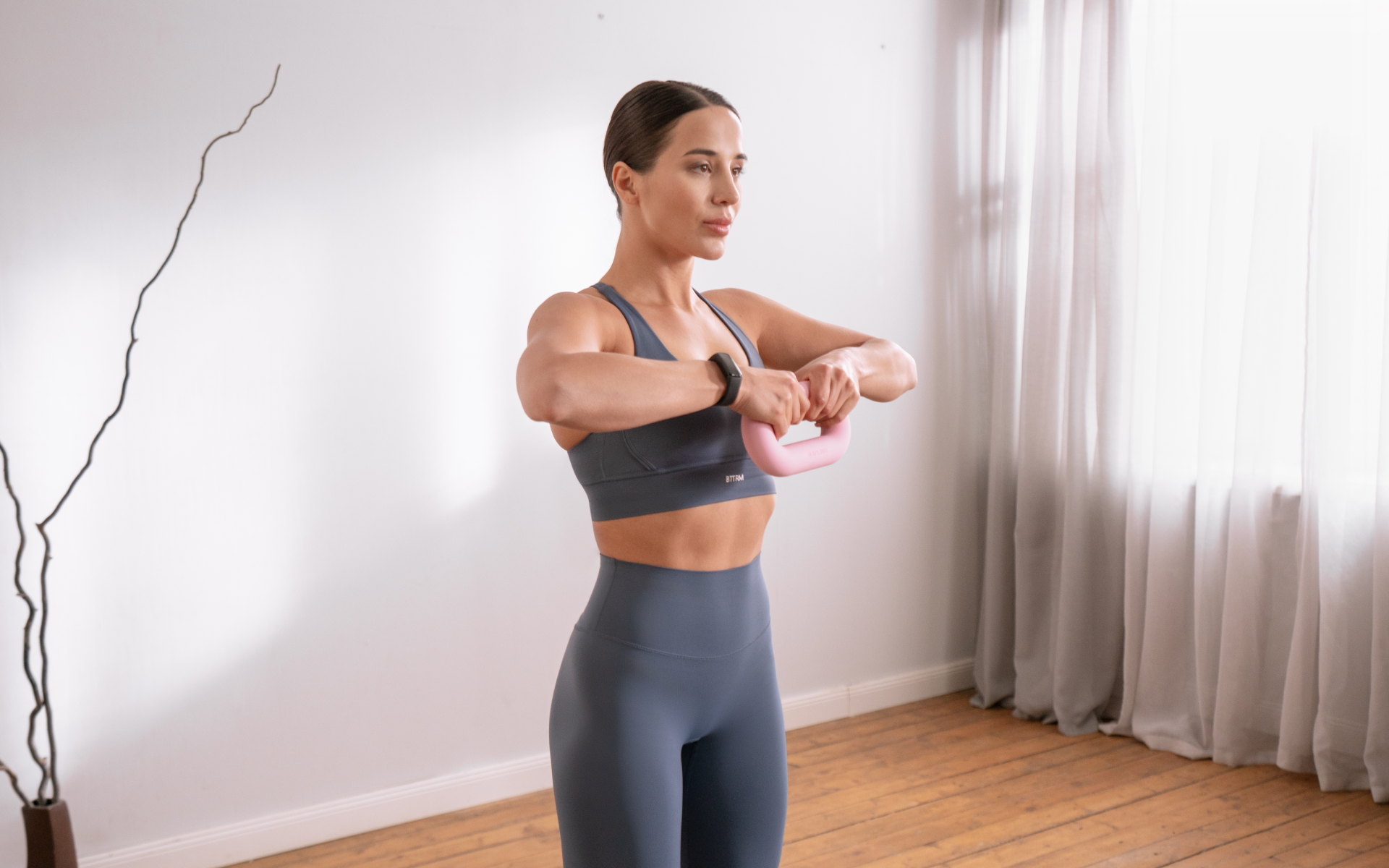Many adults wonder, “What is best for building muscle after 40?”
Is it harder to stay in shape after 40 and build a toned, muscular body?
These questions reflect a common misconception that intense exercise, particularly resistance training, is exclusive to younger adults.
This belief may discourage individuals in their 40s and beyond, making them think that building muscle is unattainable.
However, this perception is far from reality.
If you’re unsure how or where to begin, this guide will help you start building muscle effectively after 40, regardless of gender.
What Is A Healthy Weight Training Over 40?
Weight training after 40 focuses on maintaining health and combating natural muscle decline.
But why should individuals at this age prioritize it?
According to several scientific studies, beginning as early as the age of 30, individuals who do not provide the proper training stimulus, such as:
- No targeted strength training
- No daily activities requiring significant muscle strength
These inactive adults experience muscle loss of 3-8% per decade, experiencing faster losses than their active counterparts (1, 2, 3).
This phenomenon, known as sarcopenia, can increase the risk of:
- Disability
- Reduced metabolic rate
- Promoting fat accumulation
Research further states that involuntary muscle loss increases the risk of disability in older people, reduces the metabolic rate, and increases fat accumulation in the body.
Fortunately, weight training can slow muscle loss, boost metabolism, and reduce the risk of chronic conditions such as heart disease and diabetes.
Plus, lifting weights improves physical appearance (2, 3).
Reasons why BetterMe is a safe bet: a wide range of calorie-blasting workouts, finger-licking recipes, 24/7 support, challenges that’ll keep you on your best game, and that just scratches the surface! Start using our app and watch the magic happen.
Can You Build Muscle After 40?
Building muscle, strength, and endurance after 40 is possible and well-documented in scientific literature.
2004
A review in Sports Medicine found that resistance training enhances:
- Strength
- Muscle mass
- Overall quality of life in older adults
It also improves metabolism and body composition (4).
2006
A study in the Journal of Strength and Conditioning Research reported that middle-aged women engaging in lower-body strength training twice weekly for 21 weeks significantly improved their:
- Walking speed
- Leg strength
- Balance (5).
2016
One study published in the Journal of Cardiology revealed that the benefits of weight training for over 40 males and weight training for over 40 females did not stop at healthy subjects.
The researchers studied middle-aged and elderly patients with coronary artery disease.
They found that resistance training helped them increase their:
- Lower and upper extremity muscle strength
- Peak oxygen consumption
- Weight loss (6)
2022
Another study published in the Journal of Cachexia, Sarcopenia, and Muscle in early 2022 supports these findings.
In this study, two groups of participants performed resistance training for 24 weeks with loads of 40% and 60% of one repetition maximum, respectively.
The third group did not engage in any workouts.
After 24 weeks, researchers found that all the participants in both exercise groups had improved muscle quality and quantity (7).
2023
In this review published in the Archives of Gerontology and Geriatrics journal, researchers stated that resistance training, regardless of volume or loading intensity, positively affected the muscle endurance of middle-aged and older adults (8).
2024
In this study published in the BMJ Open Sport & Exercise Medicine journal, researchers found that when building muscle after 40 females (meaning women aged 71) engaged in heavy resistance training for a year, they could increase their muscle strength and function.
Researchers also suggested that the effect of this one-year training period could last for up to 4 years (9).
Read more: Wall Pilates For Women Over 60: Transform Your Health With Low-Impact Workouts
Is Weight Training Good After 40?
Yes, it is. As mentioned above, weight training helps:
- Combat sarcopenia
- Enhance metabolism
- Reduce the risk of chronic diseases such as heart disease, arthritis, and type 2 diabetes.
- Boost mental health and sleep quality, both vital for overall well-being (2, 3, 10, 11).
How Long To Build Muscle At 40?
There is no standardized rate of how much muscle a person can build in a week, month, or year.
Understand that building muscle mass and strength is a slow and gradual process.
However, you can eventually see the desired results with patience and consistency.
What Is The Best To Build Muscle After 40?
Deciding to build muscle is a substantial first step in a healthy direction.
Here are some more tips to help you see the results of your muscle-building journey:
- Start Strength Training
Also known as weight or resistance training, this is the best exercise for growing muscle mass, strength, and endurance.
Remember that muscles grow after they endure adequate stimulus, causing the muscle fibers to develop microtears, and with rest, these fibers repair themselves bigger and stronger than before.
Strength training options:
- Calisthenics (aka bodyweight exercises)
- Using free weights and/or gym machinery to help increase resistance
Weight training over 40 for beginners should begin with bodyweight exercises to learn the proper form before using weights, then start light and gradually increase the weight.
Strength training exercises also come in 2 classifications:
- Isolation exercises: Single-joint movements that target one muscle group at a time (e.g., bicep curls, tricep presses).
- Compound exercises: Work multiple muscle groups and joints simultaneously (e.g., squats, pushups, deadlifts, pullups).
Regardless of age, most individuals looking to improve general strength, fitness, and function should focus most of their workouts on compound exercises.
- Add Aerobic Exercises To Your Routine
Cardiovascular exercise is essential to overall health and should be in nearly any training program.
You can do cardio before or after your workout or dedicate 1-2 days for 20-30mins throughout the week to aerobic training.
Not only are cardio workouts essential for your cardiovascular fitness, but if you are weight training over 40 for weight loss, cardio helps you burn a lot more calories.
Remember that weight training helps with muscle growth and calorie burning after the workout. Still, depending on the intensity of each exercise, cardio typically burns more calories during the session.
We recommend combining cardio and strength training in your routine for the best results.
- Watch What You Eat
Proper nutrition is the cornerstone of any fitness goal, whether building muscle, losing fat, or improving overall health.
Without the right balance of nutrients and caloric intake, progress in the gym may be slow or nonexistent.
Building Muscle At A Healthy Weight:
- Eat a calorie surplus if you’re at a healthy weight and want to increase muscle mass. A surplus means consuming more calories than your body burns daily to provide the energy and nutrients necessary for muscle repair and growth.
- Increase Protein Intake: Aim for 1.2–1.6 grams of protein per kilogram of body weight daily. Lean sources like chicken, fish, tofu, and legumes are excellent options.
- Incorporate Healthy Fats: Unsaturated fats from sources like avocados, nuts, and olive oil to support hormonal health.
- Prioritize Complex Carbohydrates: Foods like whole grains, sweet potatoes, and vegetables provide sustained energy and fiber.
Losing Fat And Building Muscle Simultaneously:
- If you’re overweight and aim to lose fat while building muscle, you’ll need a calorie deficit—consuming fewer calories than you burn. However, do this carefully to preserve lean muscle mass.
- Combine resistance training with cardio: Strength training helps build and maintain muscle, while aerobic exercise promotes fat loss.
- Focus on Protein: Maintain a higher protein intake (around 1.6 grams per kilogram of body weight) to support muscle repair and minimize muscle loss during a calorie deficit.
- Opt for nutrient-dense foods that energize you, such as leafy greens, lean proteins, whole grains, and healthy fats. If you are older and worried about your metabolic rate, our article on how to speed up metabolism after 50 has valuable tips and tricks.
- Stay Hydrated
Staying hydrated is good for your health as it can prevent dizziness, lightheadedness, headaches, and fatigue (12).
But this is not all that water is good for.
Research shows that working out while dehydrated can affect performance (13).
Reduced performance can mean slow or even halted progress in the gym. You may also end up injuring yourself if a wave of dizziness or lightheadedness hits you in the middle of lifting weights.
-
Sleep More
Research shows insufficient sleep can reduce muscle mass and strength even if strength training is part of the routine (14, 15, 16).
Try to get 7-9 hours of uninterrupted sleep each night to combat this.
Read more: Intermittent Fasting for Women Over 45: Does It Help With Perimenopause?
How Often Should A 40-Year-Old Lift Weights?
Experts recommend that adults do muscle-strengthening exercises at least twice a week or more (17, 18).
As a 40-year-old, you can start with 2 days and gradually increase this number over time.
How Much Protein Is To Build Muscle Over 40?
The recommended daily protein intake is about 0.8g per kilogram of body weight, which is enough to help increase lean body mass (aka muscle mass (19)).
Studies have shown that active individuals who regularly engage in strength training and aim to build muscle mass can increase their daily protein intake to 1.2-1.6 grams per kilogram of body weight (20, 21).
If you wish to free yourself from all the extra pounds that have been weighing you down for way too long, start using the BetterMe: Health Coaching app and overhaul your entire life!
Is It Harder To Stay In Shape After 40?
For many, yes, it is harder to stay fit after 40 than it was in younger years.
As explained earlier, age-related muscle loss and decreased metabolism are major culprits. A busier schedule can also affect one’s dedication to staying in shape.
However, you can stay in shape after 40 by changing your schedule to allow for exercise (cardio and resistance training).
If 100g of protein falls within the recommended high-protein intake of 1.2-1.6g per kilogram of your body weight, it can increase muscle mass. Yes, a 30-minute workout can be sufficient to build muscle, mainly if it is structured, intense, and focused on progressive overload. High-intensity interval training (HIIT), circuit training, or strength-based sessions targeting compound movements like squats, deadlifts, and pull-ups can deliver significant results in a short amount of time. Consistency is key. Short, high-quality workouts performed regularly will yield results, especially for those with busy schedules (22, 23). Yes, high-intensity interval training (HIIT) is efficient for individuals over 40, provided it’s approached with proper technique and moderation. HIIT involves alternating between intense bursts of activity and brief recovery periods, which helps improve cardiovascular fitness, boost metabolism, and support fat loss. However, individuals with joint pain, arthritis, or other mobility issues may wish to modify exercises to lower-impact alternatives, such as cycling or swimming intervals. It’s always advisable to consult your doctor before starting a HIIT or other exercise regimen. The CDC recommends at least 150 minutes of moderate-intensity aerobic exercise per week, combined with two or more days of strength training that target all major muscle groups (17). Starting with 2-3 strength sessions per week is ideal for beginners, gradually increasing frequency and intensity as fitness improves. Tailor your routine to your fitness level, goals, and schedule to ensure long-term adherence and progress.Frequently Asked Questions
Is 100g protein enough to build muscle?
Is a 30 minute workout enough to build muscle?
For maximum efficiency, ensure your workout includes:
Is HIIT good for people over 40?
For those over 40, benefits of HIIT include:
How many times a week should a 40 year old workout?
A sample weekly workout plan might include:
The Bottom Line
Weight training after 40 is a powerful tool for improving physical health, mental well-being, and overall quality of life.
While the natural aging process brings challenges like muscle loss, decreased metabolism, and a higher risk of chronic illness, resistance training can be one of many positive lifestyle factors that counteract these effects and help you thrive.
Whether you’re strength training for the first time or returning after a long break, the key to success lies in:
- Consistency
- Proper technique
- Progressive goals
Start with manageable routines and prioritize rest, hydration, and nutrition to fuel your progress.
Age is not a barrier to achieving peak fitness.
By committing to strength training and an active lifestyle, you can build a stronger, healthier, and more resilient version of yourself—well into your 40s, 50s, and beyond.
The first step starts today.
DISCLAIMER:
This article is intended for general informational purposes only and does not serve to address individual circumstances. It is not a substitute for professional advice or help and should not be relied on for making any kind of decision-making. Any action taken as a direct or indirect result of the information in this article is entirely at your own risk and is your sole responsibility.
BetterMe, its content staff, and its medical advisors accept no responsibility for inaccuracies, errors, misstatements, inconsistencies, or omissions and specifically disclaim any liability, loss or risk, personal, professional or otherwise, which may be incurred as a consequence, directly or indirectly, of the use and/or application of any content.
You should always seek the advice of your physician or other qualified health provider with any questions you may have regarding a medical condition or your specific situation. Never disregard professional medical advice or delay seeking it because of BetterMe content. If you suspect or think you may have a medical emergency, call your doctor.
SOURCES:
- Muscle tissue changes with aging (2010, pmc.ncbi.nlm.nih.gov)
- Resistance training is medicine: effects of strength training on health (2012, pubmed.ncbi.nlm.nih.gov)
- BUILD MUSCLE, IMPROVE HEALTH (2015, journals.lww.com)
- Effects of resistance training on older adults (2004, pubmed.ncbi.nlm.nih.gov)
- Effects of strength training on muscle strength characteristics, functional capabilities, and balance in middle-aged and older women (2006, pubmed.ncbi.nlm.nih.gov)
- Effects of resistance training on muscle strength, exercise capacity, and mobility in middle-aged and elderly patients with coronary artery disease: A meta-analysis (2016, sciencedirect.com)
- Effects of resistance training intensity on muscle quantity/quality in middle‐aged and older people: a randomized controlled trial (2022, pmc.ncbi.nlm.nih.gov)
- Effect of resistance training on local muscle endurance in middle-aged and older adults: A systematic review with meta-analysis and meta-regression (2023, sciencedirect.com)
- Heavy resistance training at retirement age induces 4-year lasting beneficial effects in muscle strength: a long-term follow-up of an RCT (2024, bmjopensem.bmj.com)
- The benefits of strength training for older adults (2003, pubmed.ncbi.nlm.nih.gov)
- Good Sleep for Good Health (2021, newsinhealth.nih.gov)
- Dehydration (2024, nhsinform.scot)
- Effect of hydration state on strength, power, and resistance exercise performance (2007, pubmed.ncbi.nlm.nih.gov)
- Sleep, Muscle Mass and Muscle Function in Older People (2016, pmc.ncbi.nlm.nih.gov)
- The effect of sleep restriction, with or without high‐intensity interval exercise, on myofibrillar protein synthesis in healthy young men (2020, pmc.ncbi.nlm.nih.gov)
- Sleep quality is a predictor of muscle mass, strength, quality of life, anxiety and depression in older adults with obesity (2023, nature.com)
- Adult Activity: An Overview (2023, cdc.gov)
- Maintain Your Muscle (2020, newsinhealth.nih.gov)
- Dose–response relationship between protein intake and muscle mass increase: a systematic review and meta-analysis of randomized controlled trials (2020, academic.oup.com)
- Systematic review and meta-analysis of protein intake to support muscle mass and function in healthy adults (2022, onlinelibrary.wiley.com)
- Synergistic Effect of Increased Total Protein Intake and Strength Training on Muscle Strength: A Dose-Response Meta-analysis of Randomized Controlled Trials (2022, sportsmedicine-open.springeropen.com)
- The effects of high intensity interval training on muscle size and quality in overweight and obese adults (2020, pmc.ncbi.nlm.nih.gov)
- Effects of high-intensity interval training on lean mass, strength, and power of the lower limbs in healthy old and young people (2023, frontiersin.org)
